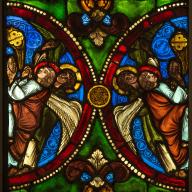Despite varying perspectives and approaches, Heritage remains a significant aspect of every human social group. However, establishing a global and coherent definition is challenging for several reasons, which will be briefly outlined below. These challenges closely mirror those typically associated with the concept of culture, such as:
Precariousness: every trait related to human behaviour and ideas is inherently related to precariousness, as such traits evolve over time, across places, and within local communities and individuals. Precariousness is a potential threat for humans, that usually seek a form of stability over time.
Variability: an immediate consequence of Precariousness is Variabilty. Heritage often changes its traits and sometimes does so in a relatively short span of time, from one generation to the other or even within the same generation.
Permanence: as a response to the previous aspects, traits of Heritage tend to be persistent over time, at least for a given period of time long enough for them to be spread and recognized within a community. This is why Heritage is often linked with tradition and seen as somehow unmodifiable. Thus, permanence exists both in appearance and in duration.
Selection: Heritage is the result of a careful—and often unconscious—work of Selection that allows to consider as part of it only some elements of the whole world. The criteria of selection can be the most various, again depending on the aspects listed for Precariousness.
Irregular pace: changes and modifications in Heritage do not follow a regular or predictable pace. It is difficult to determine when, how, or even if they will occur. Some changes are slow and limited to certain areas, while others are sudden and widespread.
A good example you can use to try to actualize the peculiarities of Heritage is fashion. While the basic types of everyday clothing have remained largely unchanged over the past fifty years (shirts, skirts, trousers, jackets…) – as we do not usually use togae – their shapes, colours and fits are certainly very different (yes, we know, the Eighties are back—unfortunately). At the same time, if you are wearing a pair of trousers and a shirt you are likely not to wear a sari or a kimono, at least not at the same time. And there is still a small pocket on the right side of your blue jeans even if you are not checking the time on a pocket watch (this explains why it is still called watch pocket).

Bibliography#
Remotti, Francesco. 1992. “Cultura.” In Enciclopedia delle scienze sociali. Vol. 2. Roma.
White, Leslie A. 2022. “Culture.” Encyclopedia Britannica. https://www.britannica.com/topic/culture (last visit: August 5, 2022).
Cite as:
Valente, R. (2025). Heritage Peculiarities. Zenodo. https://doi.org/10.5281/zenodo.15167756
